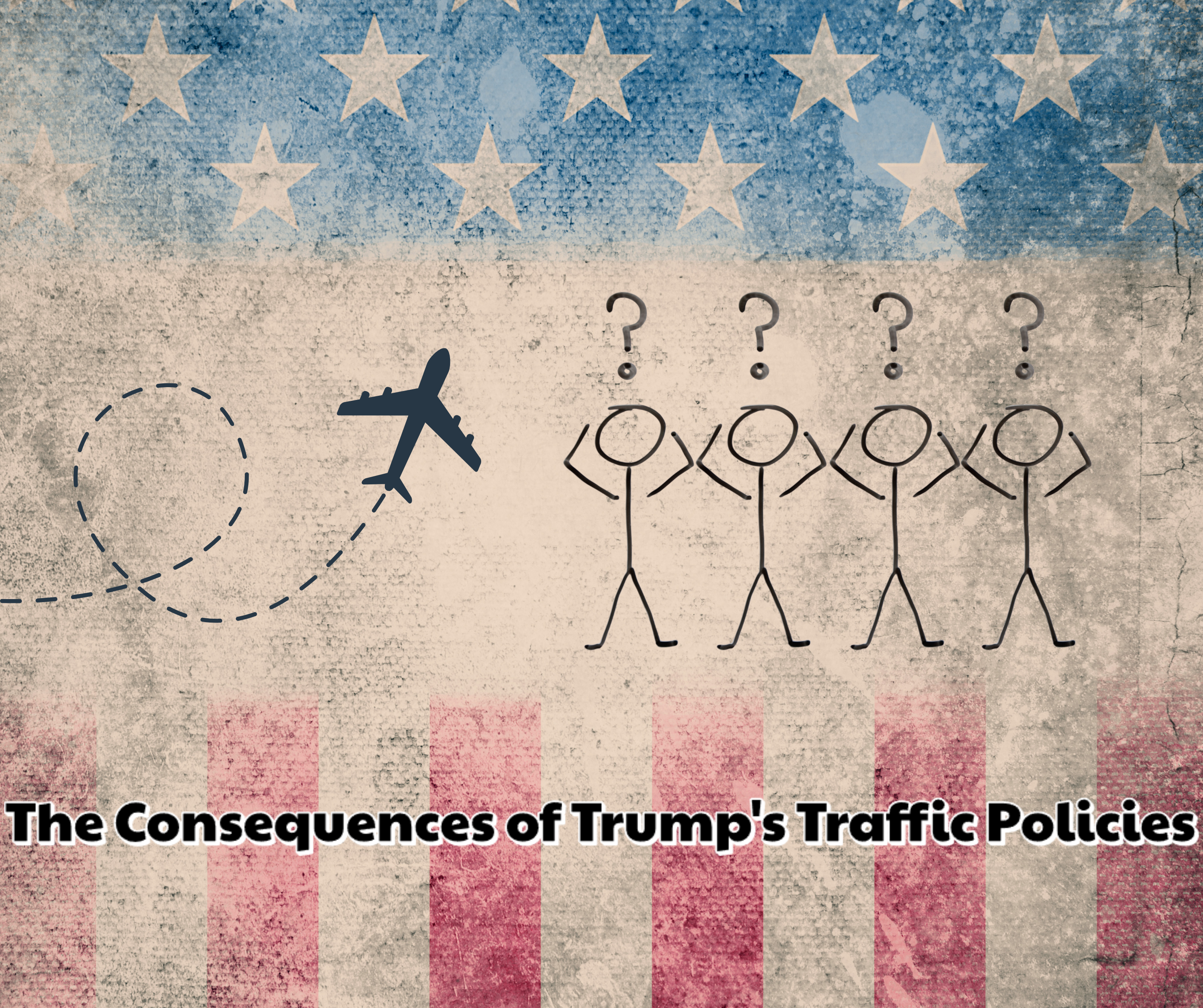
The Consequences of Trump's Traffic Policies: From America to the World
During his presidency, Donald Trump implemented a range of policies that significantly altered the flow of goods, people, and data across U.S. borders. From trade wars to travel bans and immigration crackdowns, these decisions had lasting effects first felt inside the United States, then rippling across the global economy. This article delves into the layered impact of Trump’s traffic-related policies, beginning at home and extending to the world stage.
🇺🇸 I. The U.S. Impact: Disrupted Routes and Divided Borders
Trade Tensions Hurt Local Industries
One of the most immediate effects of Trump's trade policies was on American industries. The imposition of heavy tariffs on steel, aluminum, and hundreds of Chinese goods led to a sharp increase in production costs for U.S. manufacturers. While the administration aimed to protect American businesses, many companies instead faced higher expenses and supply chain confusion. U.S. farmers were particularly hard-hit when countries like China responded with retaliatory tariffs, drastically reducing exports of soybeans and other agricultural products. Major ports in cities like Los Angeles and New York experienced congestion and shipping delays, as businesses scrambled to adjust to new regulations and costs.
Tourism & Air Traffic Decline
In addition to trade, Trump’s travel restrictions had a major effect on the U.S. tourism industry. The travel bans targeting several Muslim-majority countries not only drew global criticism but also led to a sharp drop in international visitor numbers. This decline translated into billions of dollars in lost tourism revenue, affecting airlines, hotels, restaurants, and related services. International air traffic into the U.S. declined, especially from affected regions, creating ripple effects across the aviation sector and reducing America’s appeal as a global travel destination.
Border Control & Immigration Crackdowns
Perhaps the most visible and controversial of Trump’s traffic policies involved border control. The push to build a wall on the U.S.-Mexico border, combined with strict immigration enforcement, slowed both human and commercial traffic. Policies like “zero tolerance” and the separation of families created logistical challenges for border authorities while drawing criticism from human rights groups. Legal immigration procedures also became more complex and time-consuming, causing delays not only for individuals but also for companies that relied on foreign talent. In border towns and states, local economies suffered as the usual cross-border exchange of goods and labor declined.
II. Global Ripple Effects: Re-Routing a Connected World
Escalation of the U.S.–China Trade War
In April 2025, the Trump administration intensified the trade conflict with China by raising tariffs on Chinese imports to 125%, while simultaneously announcing a 90-day pause on tariffs for most other countries. This move aimed to isolate China economically but led to significant global market volatility. China retaliated by increasing tariffs on American imports to 125%, exacerbating economic instability and leading to record-high gold prices, surging U.S. Treasury yields, and a weakened dollar. Market volatility reflected mounting fears of inflation and recession, with U.S. consumer inflation expectations hitting their highest level since 1981. Despite markets signaling distress, Trump downplayed concerns, asserting tariffs would ultimately strengthen the dollar and bring favorable trade deals .
Supply Chains Rewired
The intensifying trade tensions prompted global companies to reevaluate their supply chains. Many businesses moved their manufacturing out of China not to the U.S., as hoped, but to emerging economies like Vietnam, India, and Mexico. This shift marked a major reconfiguration of global trade routes, with the U.S. inadvertently encouraging new regional alliances and trade corridors that excluded American influence.
Technology and Data Traffic Disrupted
Technology and data traffic were also affected. The ban on Chinese telecom giant Huawei disrupted the global rollout of 5G infrastructure, as countries had to choose between U.S. support and Chinese equipment. Export controls on semiconductors and advanced tech further complicated global collaboration, especially in sectors where the U.S. once led innovation. Financial institutions and tech companies worldwide became increasingly wary of U.S. sanctions, prompting some to diversify away from American-based systems and platforms.
Conclusion: A Legacy of Redirection
Trump’s traffic policies both literal and metaphorical redrew the map of global movement. While the intention was to prioritize American interests, many of the consequences weakened the country's central role in global commerce and diplomacy. Domestically, industries and local economies faced disruptions. Globally, countries forged new partnerships and shifted routes that continue to bypass the U.S. The legacy of these changes serves as a powerful reminder that traffic, whether of goods, people, or data, flows more easily with bridges than with barriers.
 Contact Us
Contact Us